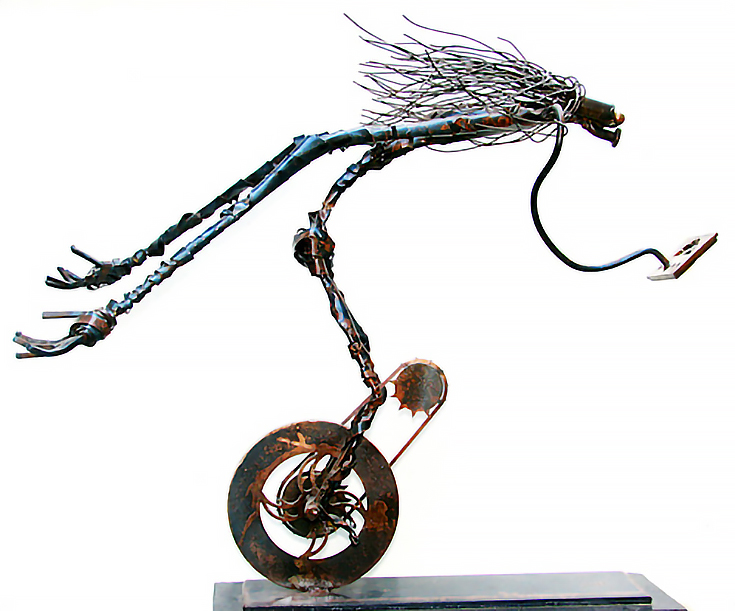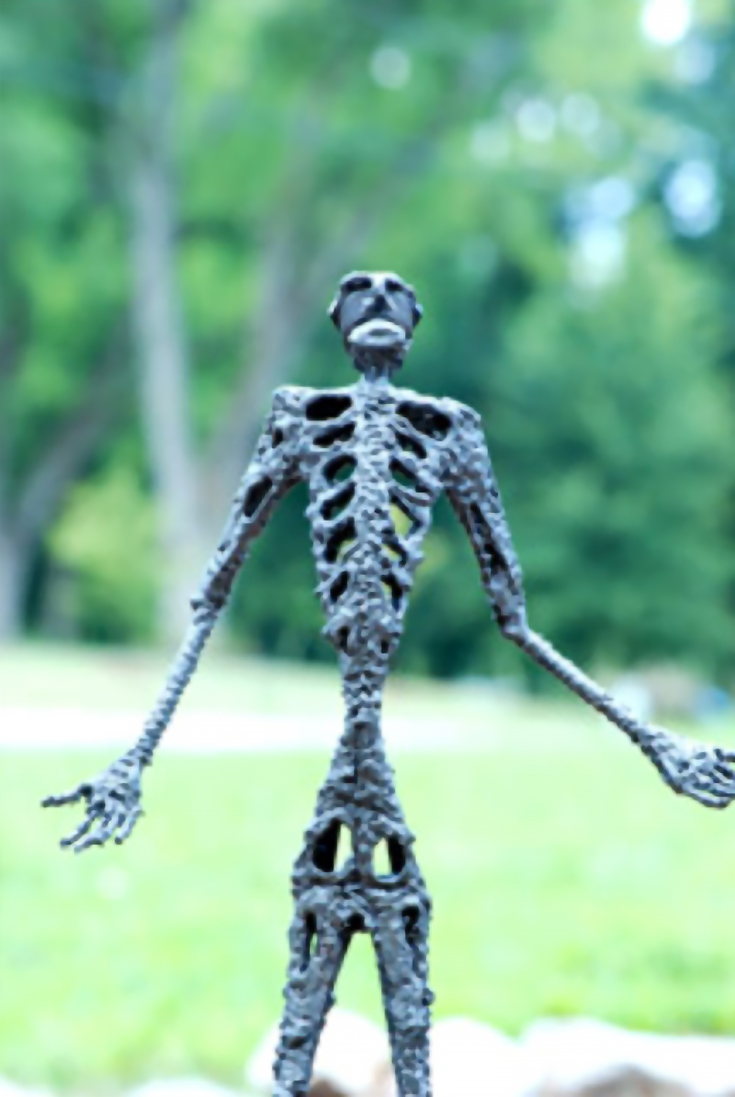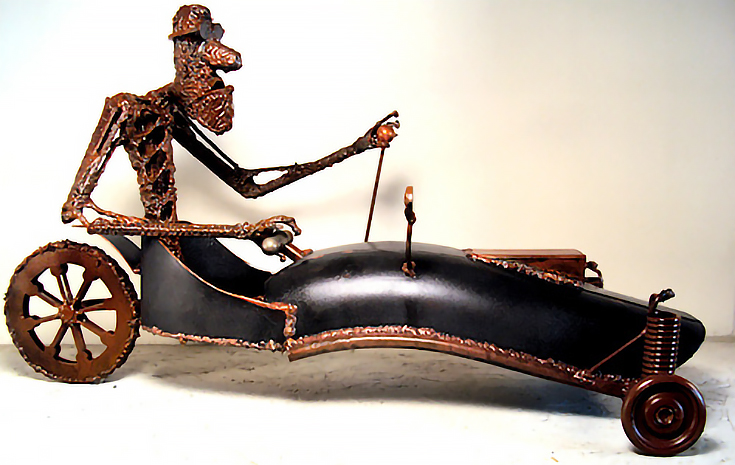
Today Eric sells his work in various forms, including sculpture, wall art, decorative gates and furniture pieces.
Alyice: When you first started your career as an artist, what were your goals and how have they changed, or grown, over the years?
Eric: When I first started, my goals were to have a large elaborate studio in some metro area with a crew of people scurrying around and their only job was to make sure I was happy. That would be the last thing I would want at this point, however. I just want my art to be appreciated by the largest amount of people possible.
When I was working as a designer and doing my art on the side, it was hard because it seemed like the job that was paying the bills was the one getting in the way. One week I would be placing unsold sculptures around the house as decoration and the next week I would be frantic because I was at the “job” when I should be home working to fill commission orders.
If I had it to do over again, I would forgo the steady paycheck, do what I love, and let the chips fall where they may.
Alyice: As you know, art is very subjective in nature. I’m sure you’ve received both positive and negative feedback in your career, but what I want to know is how you handle the negative criticism?
Eric: My first negative criticism came from a fellow artist. We were at an opening that featured both of our work and we were looking at one of my pieces. The artist said, without looking at me, “Your work has no business being in this gallery.”
He then turned to me and said, “But I like it.”
Later that evening I sold a piece to a man who, with tears in his eyes, thanked me for making that particular piece because it reminded him of his son.
That’s when I realized the subjective nature of the art world. What I’ve learned is that you have to create art that you are emotionally invested in and not what you are expected to create. I don’t always like what other artists do, but somebody does.
Alyice: How did you get into sculpting with metal?
Eric: I began sculpting metal in my father’s garage. He had some scrap iron and a acetylene torch rig. I asked him to show me how to use the torch and his welder and I’ve been doing it ever since.
Alyice: In your opinion, what makes a metal sculpture?
Eric: Metal sculpture, to me, is like a collection of bones taken from different places and reassembled into something that evokes a natural emotional response.
Alyice: Metal can be a tricky material to work with, yet you’ve developed a technique which allows you to “weld up on an armature to achieve a desired effect.” Can you explain a little bit about this process?
Eric: The process I use came early in my career as an artist. I tried to recreate with metal the effect that I got when I sculpted with clay. I tried to use the welder to soften the edges of the otherwise harsh steel. I liked the effect that I got so much that I just kept going and eventually covered the whole piece with weld. I don’t always use this process but I do more often than not.
Alyice: For some, creating with metal can be scary and dangerous. Can you share some safety tips?
Eric: Yes, glasses, earplugs (you may not think you need them until a hot rock goes in your ear), gloves, and a leather apron. Don’t skimp on these things. You may not believe me now, but you will someday when you’re standing around trying to figure out what’s burning and you suddenly realize it’s the front of your tee-shirt. Don’t say I didn’t warn you.
Alyice: Are there any tools you feel a metal sculptor should not be without?
Eric: A welder, a handheld grinder, and a handheld cutting disc are the essentials. There are many, many other pieces of equipment that will make your life easier but with these three items, and a little patience, you can do whatever you want.
Alyice: You’ve been a working artist for the past 18 years, how has the influx of social media changed the way you market your art?
Eric: Social media has allowed people who would otherwise never have seen my art to be exposed to it. It also is invaluable for keeping people updated on what you are doing now and what the upcoming projects may be.
Alyice: One area that many sculptors struggle with is pricing their pieces. How did you come up with a profitable pricing structure?
Eric: Pricing has always been a problem for me. I think a delicate balance between “too cheap to buy” and “has he lost his mind” is hard to find. I used to base my prices on what I would pay for it but you see how subjective that could be.
It all boils down to what the market will bear, but you have to start somewhere. Now, where I start is based on hours. . . how long did it take me to create this piece?
You can learn more about Eric Johnson’s art at www.rejohnsoniron.com.
This post may contain affiliate links.



